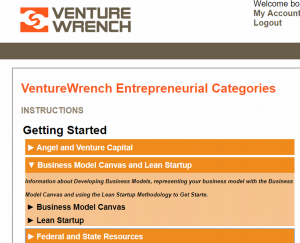 As I said earlier, most startups die for pretty well understood reasons. In this series of posts, we will discuss some of those ways that startups die and ways that you can avoid these deadly mistakes! In today’s post we will address the first one, failure of product-market fit. This mistake becomes deadly because, without a serious pivot, when potential customers simply don’t like or want your idea, they never become “actual” customers, with actual revenue or value to exchange!
As I said earlier, most startups die for pretty well understood reasons. In this series of posts, we will discuss some of those ways that startups die and ways that you can avoid these deadly mistakes! In today’s post we will address the first one, failure of product-market fit. This mistake becomes deadly because, without a serious pivot, when potential customers simply don’t like or want your idea, they never become “actual” customers, with actual revenue or value to exchange!
Here’s a List of 10 Reasons that Startups Fail
-
Destructive corporate culture
-
Failure of product – market fit
-
Founder issues and conflict
-
Staffing and Team problems – poor hiring choices or inability to prune staff appropriately
-
Can’t raise sufficient capital
-
Run out of cash after raising capital
-
Scaling too soon or improperly
-
Intractable technical problems
-
Poor strategic environment (customers, suppliers etc)
-
Regulatory problems (forseen or unforseen)
2. Failure of Product – Market fit
Early in my career, a product management professional introduced a new product – a new cellular data product compatible with the RIM (later Blackberry) network, to the entire marketing team. One senior member of the team asked a number of probing questions about whether the product had been vetted with customers and what those customers had said about the features.
The product manager simply said “What’s there not to like?”
 What’s there not to like? The marketing team was stunned into silence. In fact customers are fussy, and they have all sorts of personal opinions, preferences and yes, foibles. They have their current solutions, their work patterns, the tools they already know how to use, no matter how much better yours is. And in this case, it would be one of the first cellular data products in the world – no one knew if anyone would care, or work remotely or anything else (and there was NO high speed data or streaming video as an incentive!)
What’s there not to like? The marketing team was stunned into silence. In fact customers are fussy, and they have all sorts of personal opinions, preferences and yes, foibles. They have their current solutions, their work patterns, the tools they already know how to use, no matter how much better yours is. And in this case, it would be one of the first cellular data products in the world – no one knew if anyone would care, or work remotely or anything else (and there was NO high speed data or streaming video as an incentive!)
Unfortunately innovators, inventors and entrepreneurs often feel so confident in what they have “designed” that they feel the same way, “What’s there not to like?”. And they are completely unwilling to accept market or customer feedback.
 One valuable element of the lean startup model is the emphasis on testing your idea with customers – real customers with real opinions. If you haven’t talked to a lot of people, I recommend you consider the Lean Startup model as a good one to begin testing your product – market fit. You can visit the VentureWrench Library, and select “Business Model Canvas and Lean Startup” under the Getting Started section. There you will find extensive resources to help you.
One valuable element of the lean startup model is the emphasis on testing your idea with customers – real customers with real opinions. If you haven’t talked to a lot of people, I recommend you consider the Lean Startup model as a good one to begin testing your product – market fit. You can visit the VentureWrench Library, and select “Business Model Canvas and Lean Startup” under the Getting Started section. There you will find extensive resources to help you.
A Stanford GSB Insights article titled Failure is the Mother of Innovation includes this recommendation from Baba Shiv, a professor at the Stanford Graduate School of Business who focuses on workplace innovation, “If you’re trying to solve a problem there are potentially hundreds of possible pathways to take, but only a few are going to lead to the appropriate solution. And the only way to discover that is to try and fail and try again.”
 The article continues with Shiv’s recommendation that companies test products or services on the average customer, not highly knowledgeable customers or early adopters. “The average customer is far less forgiving. One thing all companies can and should do is encourage a culture of innovation at all levels,” he says.
The article continues with Shiv’s recommendation that companies test products or services on the average customer, not highly knowledgeable customers or early adopters. “The average customer is far less forgiving. One thing all companies can and should do is encourage a culture of innovation at all levels,” he says.
I can only say “ditto.”
——————-
If you are planning to raise funding for your startup,
Click to Get our FREE VentureWrench Guide to Investor Capital
50 pages of insider insights to help you succeed!

